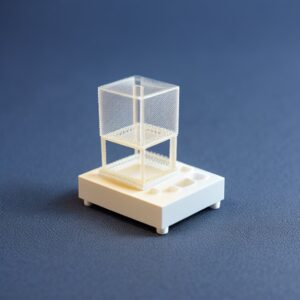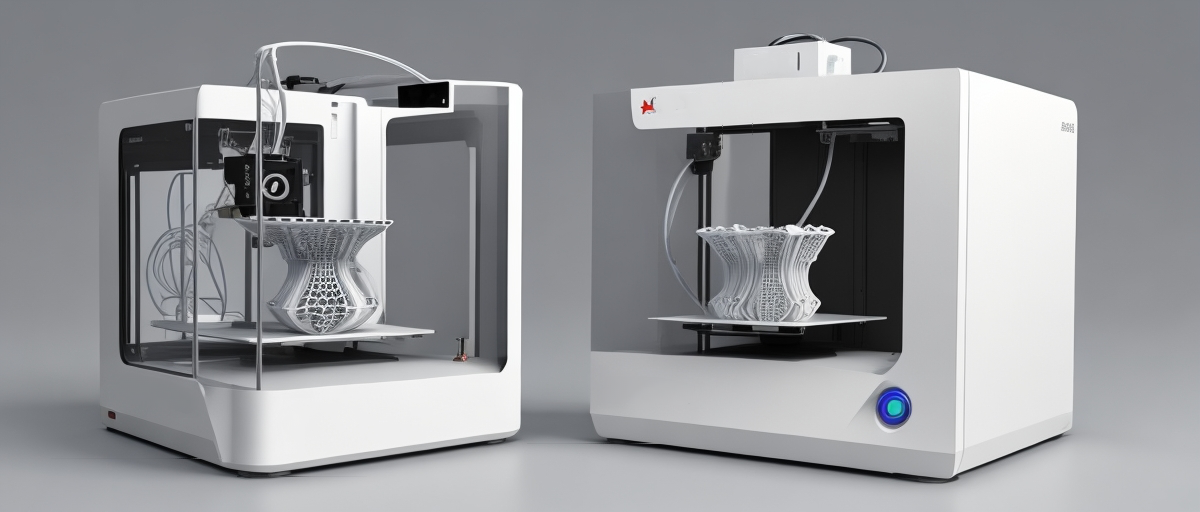 Groundbreaking techniques required an acute understanding of material behavior at diminutive scales—a venture that sought expertise from the vastly different worlds of micromachining and nanotechnology. This knowledge translated into new approaches that function beyond mere line-of-sight fabrication processes.
Groundbreaking techniques required an acute understanding of material behavior at diminutive scales—a venture that sought expertise from the vastly different worlds of micromachining and nanotechnology. This knowledge translated into new approaches that function beyond mere line-of-sight fabrication processes.
One such example of innovation is the technology known as two-photon polymerization (2PP). 2PP operates on the principle that two photons of infrared light, when simultaneously absorbed in a photosensitive polymer, can induce a reaction allowing for ultra-fine resolution at the focal point. Catering to the nanoscale, it utilizes the nonlinear optical effects to solidify complex structures layer by layer with a precision that is unparalleled in other 3D printing techniques.
Electron beam lithography (EBL), relies on a high-energy beam of electrons to draw custom patterns onto a surface coated with an electron-sensitive film known as a resist. Each exposure of the electron beam modifies the resist which can then be developed to remove the exposed or unexposed regions, leaving behind a nano-patterned structure. It is a technique praised for its ultra-high resolution, capable of reaching dimensions of just a few nanometers.
Processes like focused ion beam (FIB) milling have also shed light on the possibilities within nanoscale fabrication. Utilizing a beam of ions for material etching and deposition, FIB can modify materials at nanometer scales, a feat that is fundamental for semiconductor device editing and precise material analysis.
This transformation from macro to micro and nano fabrication is not a mere downsizing of dimensions; it is a fundamental change in how materials are handled, manipulated, and conceived. As these processes continue to improve, they are opening doors to a multitude of revolutionary applications that were once beyond reach. Medical fields anticipate the next generation of implants and prosthetics with cellular-level precision, potentially revolutionizing regenerative medicine and targeted therapies. The electronics industry eyes the realistic prospect of nanocircuitry that could radically enhance computational speed and storage capacity, essential for the exponential growth of data-centric sectors.
Advancements resulting in the ability to create complex and highly ordered three-dimensional structures on the nanoscale are paving the way for unprecedented developments in photonics, metamaterials, and sensing devices—each with the potential to vastly expand our capabilities in communications, energy, environmental monitoring, and defense.
Technologies Used in Micro/Nano 3D Printing
Two-Photon Polymerization (2PP) process utilizes a femtosecond laser—generating pulses at quadrillionths of a second—to induce controlled polymerization within a photosensitive resin. The key to 2PP’s high resolution lies in the non-linear optical effect where polymerization occurs only at the precise focal point of the laser where two photons are absorbed simultaneously. This phenomenon ensures that solidification is confined to a minuscule volume, allowing for the construction of features as small as 100 nanometers—about one-thousandth the width of a human hair.
The capability of 2PP to create structures with such intricate complexity and nanoscale resolution makes it an invaluable tool for applications spanning biomedicine, photonics, and microfluidics. By moving the laser focal point through the resin in a pre-programmed pattern, it’s possible to fabricate complex three-dimensional geometries with unparalleled precision. This has opened up new frontiers in creating scaffolds for tissue engineering, where the mimicry of the native extracellular matrix’s structure at the cellular level is crucial.
Direct laser writing (DLW) techniques, which utilize femtosecond lasers as well, have become another workhorse in the field. DLW offers a method of subtractive as well as additive manufacturing by ablating material or causing photochemical changes to deposit material. Its precision and flexibility make it particularly useful for creating micro-optical components and intricate electronics.
Electron beam lithography (EBL), unlike the aforementioned photon-based techniques, harnesses a beam of electrons to etch incredibly fine patterns onto a substrate. The high energy and tiny wavelength of electrons allow this method to achieve resolutions down to a few nanometers. EBL is widely used in the semiconductor industry for mask-making and direct write processes, setting the stage for next-generation electronics with densely packed transistors and interconnects.
In EBL, a finely focused electron beam modifies a resist that has been previously applied to a substrate. Following exposure, the resist undergoes a chemical transformation which allows it to be selectively dissolved, and the pattern can then be transferred onto the substrate via etching or deposition. This meticulous level of control over patterning has made EBL a cornerstone in the fabrication of nanoelectronic devices, where every atom counts.
The convergence of these methods—the precise focus of 2PP, the flexibility of DLW, and the electron beam accuracy of EBL—epitomizes the technological triumphs of modern engineering. Each method offers unique advantages, yet they are all bound by their collective pursuit of the tiniest scales and the most precise details.
The implications of these nano-fabrication technologies are far-reaching, impacting industries, research, and even our conception of what is possible to build. The synergy between material science, optical engineering, and precision mechanics in these techniques highlights their current capabilities and alludes to the future innovations they will drive. Microscale and nanoscale 3D printing don’t just challenge the limits of scale—they redefine them, heralding a new epoch where the micro and nano realms can be sculpted with the same dexterity and creativity as their macroscopic counterparts.
Materials and Substrates
Photosensitive resins, which respond to light by undergoing a solidification process, are commonly used across various microfabrication techniques for their ease of manipulation and compatibility with precision printing methods like 2PP and DLW. These resins can be finely tuned to exhibit specific properties, such as stiffness or flexibility, and responsiveness to different wavelengths of light, permitting the fabrication of intricate details required at the micro and nano levels.
Researchers are continuously venturing beyond these traditional resins to explore new materials that can withstand the stresses of such detailed work. Biocompatible materials are of particular interest, especially in the field of medicine and tissue engineering. These materials must be non-toxic and able to interact appropriately with biological systems. For example, hydrogels, a network of polymer chains capable of retaining water, mimic the natural environment of the extracellular matrix and are therefore instrumental in supporting cell growth and tissue formation in bio-printing applications.
Working with such sensitive materials presents considerable challenges. One of the issues is that of shrinkage—a common occurrence where the material contracts as the solvent evaporates or as the structure is cured, which can lead to distortions of the intended geometry. In the micro and nanoscales, where precision is critical, even the minutest amount of shrinkage can render a part unusable. Achieving consistency and accuracy requires extensive understanding and control over the curing process, including temperature, exposure time, and environmental factors.
Maintaining structural stability during and after the post-curing process is another hurdle to overcome. At the microscale, surface tension forces can dominate, potentially warping or collapsing delicate structures if not properly managed. At the nanoscale, the forces of adhesion and friction become increasingly significant and can affect how structures interact with their substrates or with each other.
Advanced composite materials are also being developed to address these challenges. These composites may blend organic and inorganic substances, providing the mechanical strength of ceramics or metals while retaining the flexibility and biocompatibility of polymers. Some composites are designed to be ‘self-supporting’, containing additives that enhance their structural integrity and minimize collapse during the intricate printing processes.
The development of stimuli-responsive materials that can alter their properties in response to environmental cues opens up new avenues for creating dynamic systems that can adapt and change post fabrication. These smart materials could potentially create devices that are responsive to temperature, pH, light, or magnetic fields, showcasing the enormous potential of the micro and nanoscale 3D printing field.
The materials and substrates landscape in microscale and nanoscale 3D printing is one of rapid innovation, as researchers seek to stretch the boundaries of what’s possible with current technologies. Every new discovery in material science propels this field forward, offering a tantalizing glimpse into a future of tailored micro and nanostructures that are as robust as they are revolutionary in their capabilities. As the research community continues to address the challenges of shrinkage and stability, the full promise of microscale and nanoscale 3D printing moves ever closer to realization.

